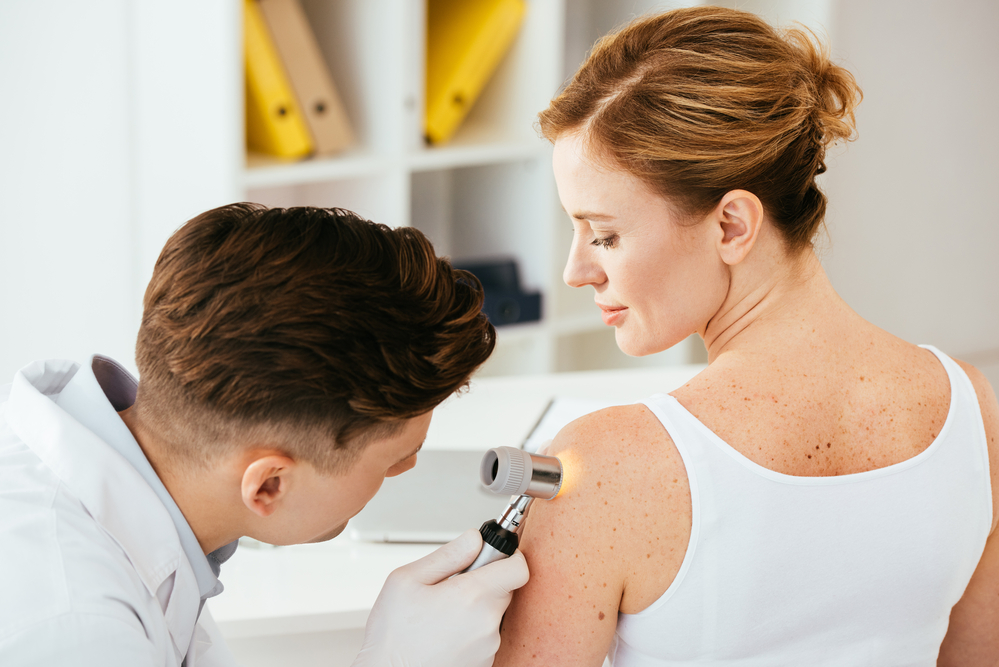
Mohs surgery is a technique used to treat skin cancer by removing layers of skin that are considered cancerous, such as moles or cancerous lesions. You will only be recommended for this procedure if your dermatologist feels like this surgery is the best method for treating your skin cancer. At Dundee Dermatology in West Dundee, IL, this procedure can help treat the most common forms of skin cancer, particularly basal cell carcinoma.
How Does Mohs Surgery Work?
This surgical procedure is performed on an outpatient basis and will generally take a few hours to complete. You will not need to use general anesthesia for this surgery so a local anesthetic to numb the surgical area will be used instead. The basis of this procedure is removing several layers of skin with a scalpel until cancer-free skin is found, which will generally take only a few minutes.
The biggest portion of this treatment will be examining the removed portion of skin in a lab, which may take about an hour. In the lab, the skin will be examined to assess each skin layer to identify cancer cells. If there are still cancer cells found in deeper layers of the skin, your surgeon will remove more layers until the lab results indicate that all skin is healthy and non-cancerous.
Preparing for Your Procedure
Because this procedure does not use a general anesthetic, you may not need to make any drastic changes to your medications to prepare for your treatment. Unless otherwise directed, you can continue using all of your medication and supplements as usual on the day of your procedure. The exceptions to these rules may be any blood-thinning medications or supplements you may be taking. Please discuss all of your medications during your consultation for the best preparation instructions.
The biggest preparations you may need to make are about how to occupy your time while your skin samples are being examined in the lab. Many people like to bring books, snacks, or even small pillows to stay comfortable during waiting periods. It’s also a good idea to clear your schedule for the day and wear comfortable clothing, such as dressing in layers in case you get cold or hot.
After Your Procedure
After your procedure is complete, the next portion of your treatment will be healing the wound. Depending on the area of the wound, your options may include allowing the wound to heal naturally, using sutures to close the wound, creating a skin flap, or grafting skin from another area of the body. You and your dermatologist will pick the best healing method for you based on your preferences and your skin type.
Once your wound has been treated, you will receive instructions on how to care for the wound at home. As a rule, your treatment area should remain dry for at least 24 hours, so you will not be allowed to shower on the day of your appointment. You should keep your wound covered unless otherwise directed. For those who have stitches, it may be helpful to keep the wound moistened with Vaseline to prevent itching.
Follow-Up Appointments
You will likely have at least one follow-up appointment one to two weeks after your procedure to assess your healing and to remove any stitches used on your wound. The follow-up appointment will allow your dermatologist to help you create a follow-up appointment to check for skin cancer in the future, too.
Although Mohs surgery has a higher rate of curing cancer than other treatments, it’s important to realize that skin cancer can develop in other areas of the skin. For that reason, it’s a good idea to have skin cancer checks at least once every two years to assess your skin health. Developing skin cancer again is more likely after you have had skin cancer once; many people will develop skin cancer in another area within five years.
Who Are Good Candidates?
The best candidates for this surgical technique are those who have basal cell carcinoma and squamous cell carcinoma, although more uncommon types of skin cancer may also be eligible for treatment. Your skin type and skin tone will generally not be considerations for this procedure; instead, your dermatologist will assess your eligibility based on factors such as previous skin cancer, the location of the skin cancer, and the appearance of the cancer area.
This procedure is ideal for those who want to preserve healthy skin and use a more conservative method for treatment. The Mohs technique is commonly used for areas on the face, around the hands and feet, and even near the genitals; it can also be used for areas like the back. This technique is also ideal for cancerous lesions that are larger, aggressive, or have borders that are difficult to define.
Ask About Mohs Surgery
If you’ve been diagnosed with skin cancer, then you likely have a few treatment options available to you. One of the most effective procedures is the Mohs technique, which removes layers of affected skin until the cancerous lesion is completely removed. Contact us in Dundee Dermatology in Elgin, IL, South Elgin, IL, West Dundee, IL, Carpentersville, IL, Algonquin, IL, Lake in the Hills, IL, Huntley, IL, St Charles, IL, and Geneva, IL to schedule your consultation today.